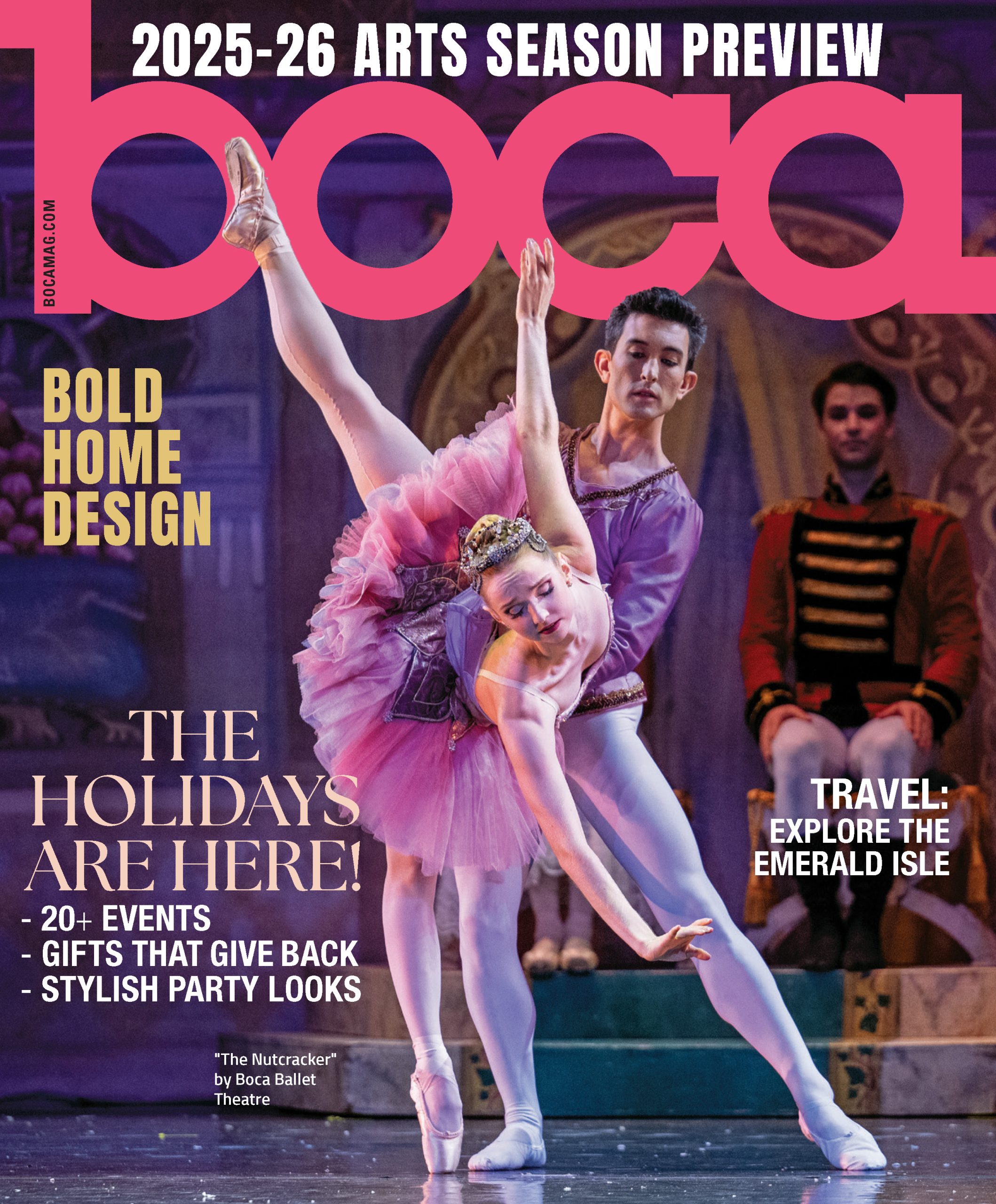After reading Palm Beach-based author Laurence Leamer’s upcoming book Hitchcock’s Blondes for the September-October issue of Boca magazine—and with Halloween just beyond the horizon—I couldn’t resist the urge to re-watch a few of the auteur’s horror movies.
I started, perhaps unsurprisingly, with “Psycho,” which I’ve contended is my favorite Hitchcock movie (and I’ve seen them all)—an opinion that verges on cliché, but hey, the heart wants what the heart wants.
For many viewers, the film’s iconic status doesn’t really register until the lurid neon of the Bates Motel shines its mordant welcome through the oppressive raindrops battering Janet Leigh’s getaway car. And certainly, all the delicious darkness of the movie’s back half holds up on the umpteenth viewing, from the clever Norman Bates double entendres that reward the repeat watcher (“[mother] isn’t quite herself today,” and of course, “we all go a little mad sometimes.”) to the same character’s methodical crime-scene cleanup sequences—silent, spare and grisly.
What I most took from the epochal shower scene, with its famous 52 cuts, is Hitchcock’s Dadaist approach to depicting onscreen violence. Never in the director’s fractured, cubist editing scheme do we actually see a knife penetrate flesh; the murder exists in the interstices. He allows us to connect the dots, filling in what the chaotic storyboards never show. By the time the maple syrup swirls down the drain, it’s still difficult not to cover our eyes.
But it’s the opening 40 minutes that remains one of the most underrated master classes in the director’s filmography. The opening scene, between Janet Leigh’s Marion Crane and her clandestine lover, Sam Loomis (John Gavin), is still steamy after all the years, with its own envelope-pushing language (“I’ll lick the stamps …”)
And the unbearable tension really picks up when Marion steals $40,000 from her boss, Hitchcock implicating us along with her, dollying in on the money as it beckons her, like drugs to an addict. We follow her as she digs herself in deeper, missing one opportunity to confess after another, her innocence compounding into criminality, and her guilty conscience running amok with imagined conversations about the discovery of her crime that gnaw at her just as the false salvation of the Bates Motel looms into view. At the end of the film, an imprisoned Norman Bates’ own interior running commentary bombards us in a similar way, as if to underline that they’re not so different; it’s only the specific compulsion that divides the psycho killer from the thief.
Released three years later, Hitch’s follow-up “The Birds” has grown more problematic to enjoy since its shocking 1963 opening, as the public has learned—Leamer’s book opens with the account—of just how much abuse first-time actress Tippi Hedren encountered while on set, including the use of real birds tied to Hedren with elastic bands. One of them almost pecked her eye out.
The ultimate abused blonde, Hedren is attacked both off the set and onscreen, as her character, Melanie Daniels, functions like Eve with the apple, bringing pestilence upon the cloistered enclave of Bodega Bay. Indeed, she is the first victim of an avian attack—when a gull swoops down to peck at her head while she oars her way onto the house of her love interest, Rod Taylor’s lantern-jawed bachelor Mitch Brenner—and her continued presence in the town seems to exacerbate the surreal bombardments.
Granted, Melanie is as much a victim as a Typhoid Mary. The larger point Hitchcock is making is one of xenophobia. A socialite with a fur coat, a perfect coif and a big-city demeanor, she is treated with skepticism, judgment and outright scorn from the townspeople, who don’t take kindly to outsiders. Note the anti-immigrant metaphors burbling under the classic scene in the local bar, in which salty sailors, drunks, doomsday prophets and the resident ornithologist discuss the airborne plague facing Bodega Bay: “Get yourself guns and wipe them off the face of the Earth,” suggests one problem-solver: “Kill them all, the messy animals.”
Of course, on a cinematic and technical level, it’s easy enough to argue that the ends justify the means. The movie is perhaps his ultimate example of infusing the everyday—birds landing on wires, for instance—with abject dread. When crows land en masse on a children’s playset, the scene plays like troops amassing on a border, readying their invasion. We watch as the individuation even between species disappears, and all the birds adopt a Borg-like collective consciousness hell-bent on human destruction. The climactic attack on Hedren plays out just like the shower scene in “Psycho,” with cut after cut like fragments of a kaleidoscope, although this time, knowing Hitchcock used real birds, it speaks to an indefensible sadism. “The Birds” is a certified horror classic, but to paraphrase another Hitchcock title, I know too much, and I’m not sure I can sit through it again.
I ended my brief Hitchcock binge with his penultimate feature “Frenzy,” which I remembered as a horror film but is more of a blackly comic policier, and thus the “odd man out” in this roundup. By this time, Hitchcock had begun to enjoy the liberties of the New Hollywood Cinema, smattering his movie with nudity and blood that actually looked like blood. It’s one of the director’s many riffs on the “wrong man” theme, in which the downtrodden Dick Blaney (Jon Finch), an average divorced schlub newly fired from his job at a London pub, is wrongly accused of a series of savage rapes and murders around the city. The perpetrator, revealed early on as an acquaintance of Dick’s, seems destined to allow his buddy to take the fall, until a quietly dogged police inspector (Alec McCowen) starts asking too many questions.
Compared to the sustained tensions of Hitchcock’s finest works, “Frenzy” feels downright breezy, and it’s loaded with rich dark comedy, propelled by both Hitchcock’s wry direction and a clever script from playwright Peter Shaffer. (Sex murders, the inspector dryly offers, are “good for the tourist trade.”) There’s no better scene than Barry Foster’s serial killer, realizing he had left an incriminating tiepin on his latest victim, being kicked by that very corpse as he wrestles it from its canvas potato sack in the back of a moving cargo truck.
Even in a film that is all in good fun, Hitchcock’s jaundiced view of humanity peers through. As character actors, Jon Finch and Barry Foster are practically interchangeable, which seems very much the point: In Hitch’s paranoid worldview, any of us could be the killer or the victim of circumstance; the innocent witness or the felon; the bringer of fortune or the harbinger of doom. There are, in fact, no blondes in “Frenzy,” lest you account for one anonymous cadaver at the very end. Despite his reputation, he may well have been an equal-opportunity sadist.
This web extra is from the September/October 2023 issue of Boca magazine. For more like this, click here to subscribe to the magazine.







